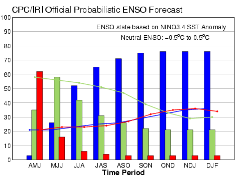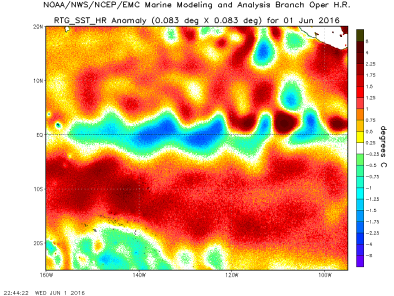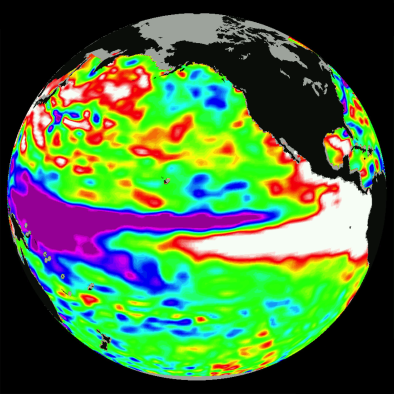


Extreme El Niño Frequency Increase
El Niño is in the process of becoming more intense due to climate change. In a warmer world there is more heat being trapped every year, so there is more heat in the oceans to fuel El Niño events. Scientists caution, however, that this is still an active area of research, and the risks associated with El Niño due to climate change remain uncertain.
Read More




Climate science at a glance
- El Niño events are becoming more intense.
- In a warmer world there is more heat being trapped every year, so there is more energy for El Niño events to work with.
- A 2019 detection study found that climate change is reshaping the evolution and intensity of El Niño events in a way that favors the occurrence of more “super” El Niños.[1]
Background information
What is El Niño?
El Niño is a periodic warming of ocean waters along with shifts in trade winds and precipitation patterns in the equatorial tropical Pacific Ocean. By adding tremendous amounts of heat to the ocean’s surface and the atmosphere, El Niño events can alter weather patterns worldwide. This is especially true for the United States during the winter, when California can be pounded by a relentless series of storms.
What is the El Niño Southern Oscillation?
El Niño is one of two phases of the El Niño Southern Oscillation (ENSO), a recurring global circulation pattern involving energy exchanges between the tropical Pacific Ocean and atmosphere. ENSO consists of oscillations between a warm phase (El Niño) and a cool phase (La Niña). Each phase typically lasts from nine months to a year, and occurs every three to seven years.
El Niño trends and climate change
- (Hu et al. 2021): Models show that under global warming, even if the ENSO's sea surface temperature remains unchanged, humidity increases, primarily due to the Clausius–Clapeyron relationship.[2]
- (Cai et al. 2014): Human-induced global warming will double the number of extreme ENSO events, raising concern that disruptions from El Niño will worsen in a warmer world.[5]
- (Cobb et al. 2013): Scientists studying coral growth rings found that El Niño events of the past few decades are more variable and more intense than the norm established over the past 7,000 years.[3] While the study did not establish a causal link between climate change and intensifying El Niño events, the trend makes sense under the framework suggesting that El Niño discharges heat absorbed during neutral years.
- (IPCC, AR5, 2013): Increased atmospheric moisture content may also affect El Niño by intensifying regional precipitation variability, leading to periods of more extreme flooding or drought.[4]
Studies attribute intensifying El Niño events to climate change
- (Ying et al. 2022): El Niño events will likely become more frequent due to climate change within the next two decades regardless of any reduction in carbon emissions.
- (Wang et al. 2019): Climate change is reshaping the evolution and intensity of El Niño events in a way that favors the occurrence of more “super” El Niños.[1]









